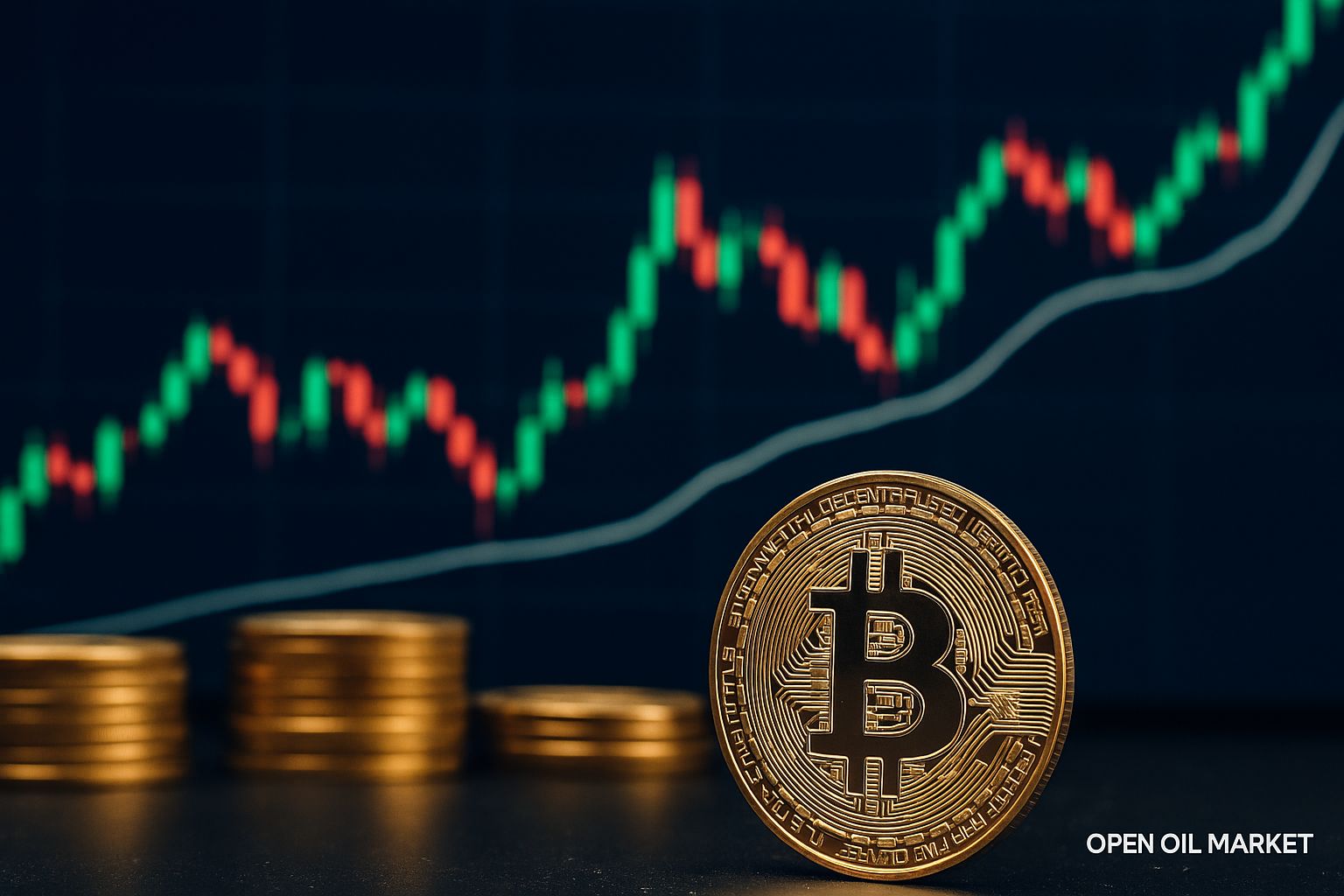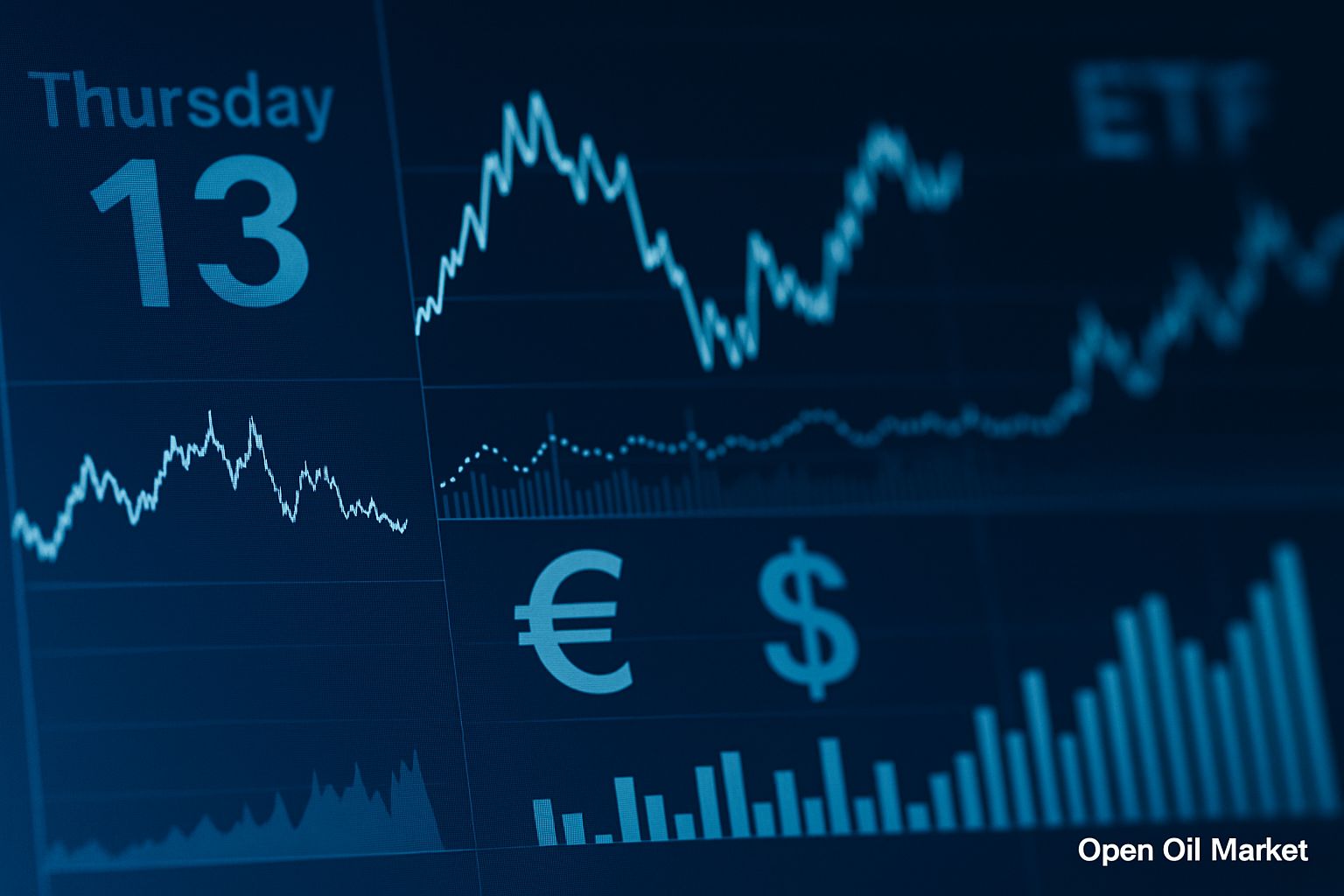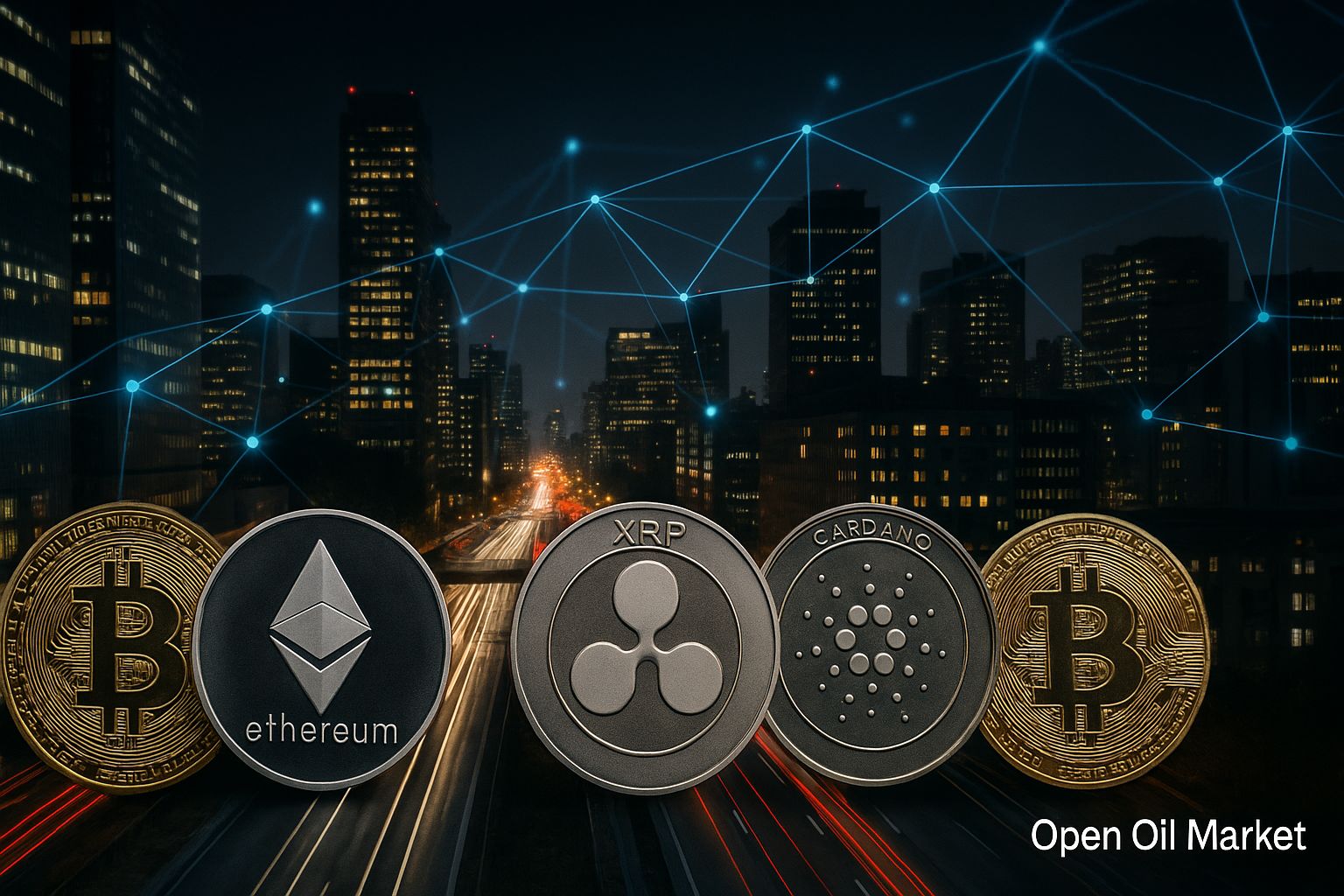
Fresh Cryptocurrency News as of 22 October 2025: Market Attempts to Stabilise After Sell-off, Bitcoin Holds Above $100,000, Ethereum Trading Around $4,000, Most Altcoins Decline, Investors Await Verdict on First XRP ETF, Overview of Top 10 Cryptocurrencies.
By the morning of 22 October 2025, the cryptocurrency market demonstrates attempts at stabilisation following renewed selling pressure the day before. On Tuesday, many digital assets sharply retreated from recent highs due to profit-taking and liquidation of margin positions. However, key levels have held: flagship Bitcoin remains above the psychologically significant mark of $100,000, sustaining the overall market capitalisation around $3.7–3.8 trillion. Following Bitcoin, Ethereum stays close to $4,000, although volatility remains elevated. Investors are gradually returning to cautious optimism after the correction but continue to monitor external factors and upcoming events—from regulatory decisions on crypto funds to corporate earnings—striving to maintain a balance between greed and fear.
- Market capitalisation of the crypto market: ~ $3.75 trillion
- Bitcoin dominance (BTC Dominance): ~59%
- Fear and Greed Index: 35 (fear)
Market Overview: Consolidation After Correction
Following a rapid rally at the beginning of October and subsequent sharp correction, the cryptocurrency market is consolidating and seeking a new support level. The total value of all digital assets has decreased by approximately 3–4% over the last 24 hours, but panic selling has been avoided. Bitcoin pulled back from a recent local peak (~$111,000) and briefly dipped to ~$107,000 on Tuesday, accompanied by a wave of position liquidations totalling over $300 million. Nevertheless, by Wednesday, the first cryptocurrency had recovered part of the loss, strengthening closer to $110,000. Other market leaders, including Ethereum and major altcoins, are showing a similar recovery dynamic after the downturn.
Market sentiment remains moderately tense. The Crypto Fear & Greed Index is in the fear zone, reflecting traders' caution amid recent price swings. The volume of forced liquidations in margin trading is gradually decreasing compared to last week's peaks, indicating a partial discharge of excessive leverage in the system. At the same time, a number of external risks, such as macroeconomic uncertainty or geopolitical events, can still influence short-term volatility. Market participants remain vigilant: any new negative news could trigger a surge in selling, while positive drivers quickly restore buying activity.
Bitcoin Holds Key Level
The largest cryptocurrency, Bitcoin (BTC), confidently holds above the key milestone of $100,000, instilling confidence in the formation of a local "bottom" following the recent correction. Currently, BTC is trading around $108–110 thousand, nearly 5% above last week's lows. Bitcoin's market dominance stands at approximately 59%, with a market capitalisation exceeding $2.2 trillion. The firm retention of this psychological threshold strengthens bullish positions: many analysts regard this as a signal of a transition to a phase of stable consolidation.
The technical indicators for the Bitcoin network remain strong. The total hashrate is nearing record levels, reflecting high miner interest and blockchain stability. In derivative markets, a "de-leveraging" is observed: open interest in BTC futures has decreased by almost 20% over the past weeks, and funding rates have returned to neutral levels. This reflects a reduction in excessive leverage and a healthier market structure, even amid the persistence of high price volatility.
Meanwhile, participants' attention is also focused on the actions of large holders. It has come to light that SpaceX (under Elon Musk's leadership) transferred around 2,500 BTC (approximately $270 million) to new addresses. Reportedly, SpaceX still holds cryptocurrency worth about $625 million. Investors are also expecting Tesla's report, due to be released on the evening of 22 October: it will reveal whether Tesla has sold any part of its 11,500 BTC (≈$1.2 billion). Any indications of a reduction in corporate Bitcoin holdings could exert short-term pressure on the market. However, no such sales have been recorded thus far, and institutional interest in BTC remains high.
Ethereum Stays Around $4,000
The second-largest cryptocurrency, Ethereum (ETH), also shows relative resilience after its retracement. In the early weeks of October, Ethereum rose above $4,700, closely approaching its all-time high ($4,890, November 2021). It then retraced alongside the market, falling to around ~$3,435 last week. Currently, ETH is trading at about $3,900–4,000, trying to establish itself at these levels. Over the past 24 hours, Ethereum has dipped approximately 3%, yet remains 10–12% higher than a month ago. Ethereum's market capitalisation is approximately $470 billion (≈13% of the total market), maintaining its status as the second-largest crypto asset.
Ethereum continues to play a key role in the industry as the leading platform for smart contracts and decentralised finance (DeFi). The network is evolving: the developer community is working on scaling solutions (such as the implementation of sharding protocols and upgrades to Ethereum's second version). Institutional interest in ETH remains robust: following the launch of the first spot Ethereum ETFs in 2025, major investors gained an accessible tool for investments in Ethereum. In early October, record capital inflows were observed into such funds, although the recent correction prompted a short-term outflow of some funds. Nonetheless, long-term investors maintain confidence in Ethereum's potential, considering plans for further improvements in network performance and its expanded applications (NFTs, gaming applications, financial services).
XRP in Focus: Awaiting ETF
One of the main newsmakers of late remains the XRP token, associated with the Ripple payment network. In summer 2025, Ripple achieved an important legal victory over the SEC in the United States: the court confirmed that secondary sales of XRP do not violate securities legislation. This removed years of uncertainty and provoked a surge of interest from major investors in XRP. Riding the wave of optimism in early autumn, XRP's price rose to around ~$3.00, temporarily returning the token to the top three market leaders by capitalisation. However, the recent overall market correction has not spared XRP: the price of the token has declined by about 20% from its peaks, and XRP now trades around $2.40. The market capitalisation stands at approximately $130 billion, placing it in 6th position among all cryptocurrencies.
The market is now focused on the anticipated SEC decision regarding the first spot ETF based on XRP. The investment company Grayscale previously filed an application to convert its XRP trust into an exchange-traded fund, and analysts predict that the regulator's verdict may follow in the coming weeks. Approval of such an ETF would represent a historic move: for the first time, an American regulator would allow a fund based on a crypto asset outside the BTC/ETH duo to be listed. This would provide access to XRP for a wider range of institutional investors and could give an additional impetus to asset growth.
There is a cautious optimism in the market regarding the chances of a favourable SEC decision, considering the more lenient stance of regulators following the successful launch of the Bitcoin ETF in the United States. In anticipation of the verdict, XRP's volatility has noticeably increased. Trading volumes of the token are rising as traders rush to position themselves, hoping to capitalise on price increases should the fund launch. If the SEC grants the green light for the XRP ETF, the market could see a new influx of institutional capital and a sharp rise in the token's price. However, in the event of an adverse outcome (another delay or rejection), short-term pressure on the price of XRP could be expected. Long-term holders are likely to remain hopeful for the project due to the newly gained legal clarity and the ongoing use of XRP in international banking transactions.
Regulation and Macroeconomics
Regulators worldwide continue to shape clearer and more favourable conditions for the crypto industry, enhancing investor confidence. In the European Union, a comprehensive MiCA regulation is entering into force, establishing uniform rules for the cryptocurrency market across the EU. In the United States, after the successful launch of the spot Bitcoin ETF, decisions on several new crypto funds (including those for Ethereum and XRP) are expected, and lawmakers are discussing initiatives to define the legal status of digital assets. In several countries, such as the UAE and Hong Kong, crypto-friendly licensing regimes are being implemented to attract innovative blockchain companies and capital into the industry.
The macroeconomic environment remains a significant factor influencing the dynamics of the crypto market. The easing of monetary policy by leading central banks—such as signals from the US Federal Reserve regarding the readiness to lower interest rates amid slowing inflation—could boost investors' appetite for risk assets and support demand for cryptocurrencies. Conversely, tightening rhetoric from regulators or escalating trade and geopolitical conflicts could temporarily dampen interest in the cryptocurrency market. For instance, early in October, reports of potential new tariffs in trade between the US and China triggered a short-term capital outflow from crypto assets. Overall, however, a combination of clear regulatory rules and a favourable macroeconomic situation is seen by analysts as a strong driver for further market growth in the medium term.
Market Outlook: Cautious Optimism
Despite recent upheavals, the long-term trend in the cryptocurrency market remains upward. Fundamental factors—such as Bitcoin's limited supply, increasing involvement of institutional investors, and ongoing technological advancements in the blockchain ecosystem—continue to support bullish sentiment. Major financial institutions are revising their forecasts: for instance, international bank Standard Chartered recently raised its Bitcoin target to $200,000 by the end of 2025. Experts surveyed by RIA Novosti expect that under favourable conditions, BTC could reach ~$135,000 as early as December, and in an optimistic scenario—up to $180,000.
Of course, the path to new records will not be straightforward. Prolonged price consolidation and short-term retracements are likely to occur in the coming weeks amid external factors. Nonetheless, strategic investors view the current correction as a healthy pause within a broader growth cycle. Experts advise maintaining a balanced approach: diversifying portfolios, avoiding excessive use of leverage, and assessing risks, especially in the face of ongoing volatility. However, if positive macroeconomic trends persist and industry regulation becomes clearer, most analysts expect key crypto assets to reach new historical highs in the coming quarters. Upcoming events—from the launch of new ETFs to the implementation of technological updates—could serve as catalysts for the next powerful ascent of the crypto market.
Top 10 Most Popular Cryptocurrencies
- Bitcoin (BTC) – the first and largest cryptocurrency, akin to "digital gold". Price around $109,000; capitalisation exceeding $2.2 trillion (≈59% of the market). BTC sets the tone for the entire crypto market and attracts both retail and institutional investors.
- Ethereum (ETH) – the second-largest digital asset and leading platform for smart contracts and decentralised applications. Price ~ $3,900; capitalisation around $470 billion (≈13% of the market). Ethereum facilitates hundreds of DeFi protocols, continues its technological development (improving network scalability), and remains a core asset for many investors.
- Tether (USDT) – the largest stablecoin, pegged to the US dollar 1:1. Price consistently $1.00; capitalisation around $80 billion. USDT serves as one of the main sources of liquidity in the crypto market, widely used for trading and settlement between various assets, ensuring rapid capital movement.
- Binance Coin (BNB) – the coin of the largest cryptocurrency exchange Binance and the native token of the BNB Chain network. Price ~ $1,050; capitalisation around $165 billion. BNB is used to pay fees on the exchange, participate in token sales, and operate decentralised applications in the Binance ecosystem. Despite regulatory risks, the token remains one of the most valuable altcoins, recently reaching a historical high.
- USD Coin (USDC) – the second most important stablecoin, backed by reserves in dollars (issued by Circle). Price $1.00; capitalisation ~ $30 billion. USDC is notable for its high transparency in reserve reporting and is popular among institutional investors and DeFi protocols as a reliable means of entering and exiting cryptocurrencies.
- Ripple (XRP) – the cryptocurrency of the Ripple payment network, aimed at global banking transfers. Price ~$2.4; market capitalisation around $130 billion. Following Ripple's court victory, interest in XRP from investors surged; the token remains among market leaders, offering fast and inexpensive transactions. Anticipation of a potential XRP ETF launch keeps attention on the coin.
- Solana (SOL) – a high-speed blockchain for decentralised finance and applications. Price ~ $185; capitalisation around $70 billion. The Solana ecosystem is recovering after a recent downturn and continues to attract developers (DeFi, NFT projects). There are now expectations for the launch of exchange-traded funds on SOL, increasing investor interest in the coin.
- Cardano (ADA) – a smart contract platform with a scientifically driven approach to development. Price ~ $0.65; capitalisation ~ $23 billion. The Cardano team regularly implements technological upgrades (such as the Hydra scaling protocol). A wide community and plans to launch investment products (ETFs and trusts) lend ADA the status of a promising asset for long-term investors.
- Dogecoin (DOGE) – the most well-known meme cryptocurrency, originally created as a joke. Price ~ $0.19; capitalisation ~ $28 billion. DOGE remains in the top ten cryptocurrencies due to its dedicated community and periodic attention from celebrities. Despite its high volatility and speculative nature, the coin demonstrates remarkable resilience in investor interest.
- Tron (TRX) – a blockchain platform focused on the entertainment industry and multimedia dApps. Price ~ $0.32; capitalisation ~ $29 billion. Tron is characterised by high throughput and extensive use for issuing stablecoins (a significant share of USDT circulates on its network), as well as staking opportunities. These factors help TRX maintain its position among market leaders, particularly considering the network's popularity in the Asian region.




